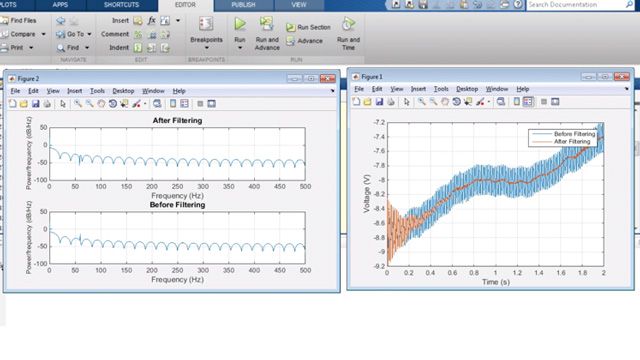What Is a Notch Filter?
A notch filter is a filter that weakens signals in a small range of frequencies and allows all other frequencies to pass through unchanged.
Notch filters are effective at removing interfering signals at specific frequencies. In audio and other signal applications, the background hum produced by the electrical grid (often 60 Hz) can be removed by designing a notch filter for that frequency. In software-defined radios, interfering FM broadcast signals can be removed with notch filters. A notch filter is a type of bandstop filter made from a combination of high-pass and low-pass filters. Notch filters are also referred to as “band-rejection filters.”
FIR Filters
FIR filters are an attractive option because they are inherently stable. They can be designed to have a linear phase that introduces a delay in the filtered signal while maintaining the waveform shape. Nonetheless, these filters can have long transient responses and might prove computationally expensive in certain applications. FIR filters are useful in audio, biomedical, radar, and other applications where the waveform shape provides useful information. Common design methods for low-pass FIR-based filters include Kaiser window, least squares, and equiripple.
IIR Filters
IIR filters are useful when computational resources are at a premium. IIR filters reduce hardware requirements by using fewer filter coefficients. Stable, causal IIR filters, however, do not have a perfectly linear phase. IIR filters are commonly used in applications, such as audio equalization, biomedical sensor signal processing, IoT/IIoT smart sensors, and high-speed telecommunication/RF applications. Design methods for IIR-based filters include Butterworth, Chebyshev (Type I and Type II), and elliptic.
Filter Design in MATLAB
The bandstop function in Signal Processing Toolbox™ is particularly useful to quickly filter signals. You can use designfilt and other algorithm-specific (e.g., butter, fir1) functions when more control is required on parameters such as filter type, filter order, and attenuation. For more information on filter design, see Signal Processing Toolbox .
Examples and How To
Software Reference
See also: DSP system toolbox, low-pass filter, filter design, quantization, high-pass filter, bandpass filter




